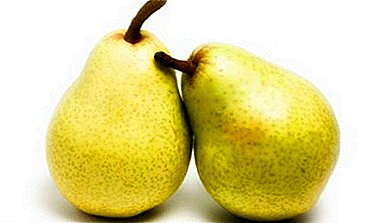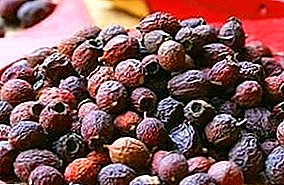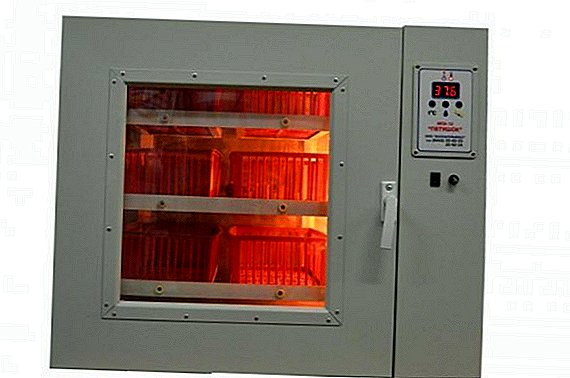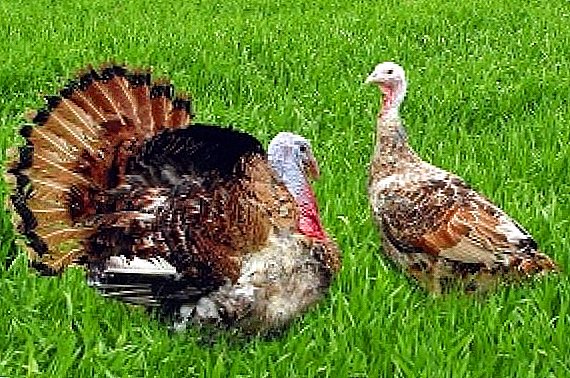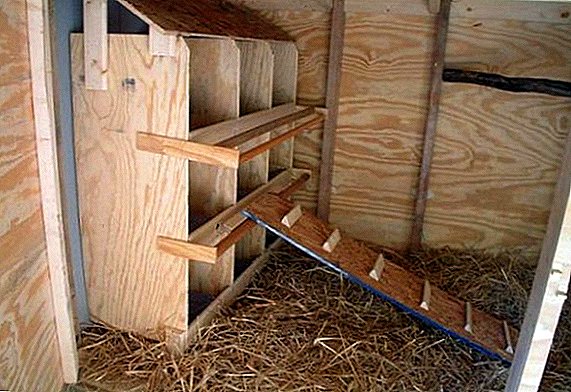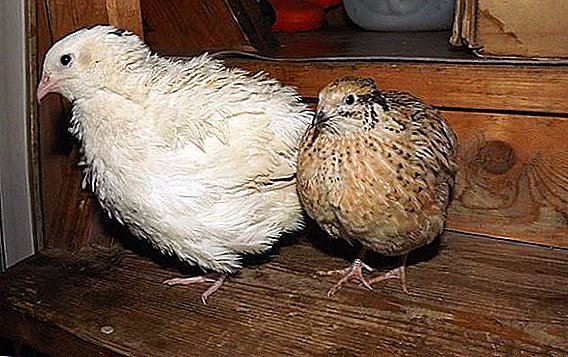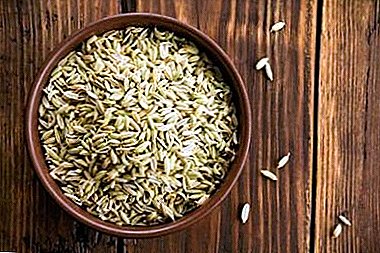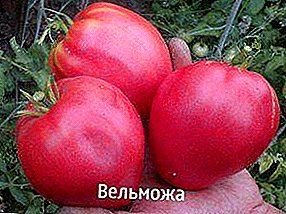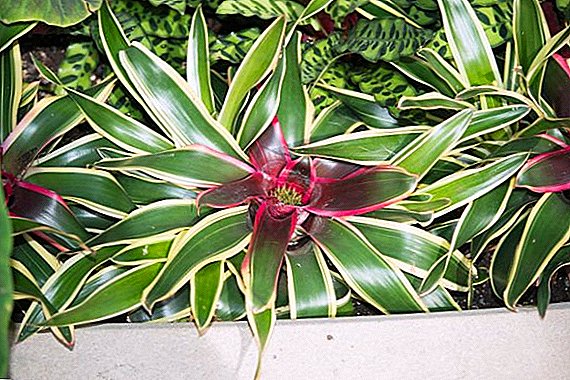 Neoregelia is sure to appeal to all lovers of unusual indoor plants, especially those who have already grown the houses of other members of the Bromelia family. They are valued not only for an attractive appearance, but also for ease of care, so when you plant a plant, you will not have to constantly pay attention to it. We invite you to learn more about this exotic flower.
Neoregelia is sure to appeal to all lovers of unusual indoor plants, especially those who have already grown the houses of other members of the Bromelia family. They are valued not only for an attractive appearance, but also for ease of care, so when you plant a plant, you will not have to constantly pay attention to it. We invite you to learn more about this exotic flower.
Botanical description of indoor plants
Among the representatives of the genus neoregelii are found as epiphytes and land plants. In their natural habitat, they can be found in the eastern parts of Colombia and Peru, as well as in the territory of Ecuador, where these flowers choose mostly wetlands for life.  The dark green leaves of the plant form a dense rosette. All sheet plates have a belt-like shape, and their edges can be both smooth and decorated with small spines. In the central part of the rosette, the color of the foliage is usually greenish-white or pale pink, but when the inflorescence appears, the inside or the ends of the leaves themselves become saturated red.
The dark green leaves of the plant form a dense rosette. All sheet plates have a belt-like shape, and their edges can be both smooth and decorated with small spines. In the central part of the rosette, the color of the foliage is usually greenish-white or pale pink, but when the inflorescence appears, the inside or the ends of the leaves themselves become saturated red.
The appeared inflorescence has a racemose shape and grows out of the sinus of leaf plates. All flowers are small, securely fastened in the axils of the bracts. Their color varies depending on the type of neoregelia and can be blue, white or purple. At the end of flowering fruits appear on the plant - berries, filled with a large number of egg-shaped seeds.
Did you know? In indoor floriculture, the described plant is best grown for people who have a soft and docile nature, able to change to a more rigid one in certain situations. The pointed tips of the leaves perfectly absorb negative energy, so the plant should be placed in living rooms and hallways.
Main types
In the tropical rainforests of South America, you can find about 60 different types of neoregels, but only a few of them are common in indoor floriculture:
- Caroline - perennial epiphytic plant with bright green shiny leaves and prickly edges of leaf plates. In length, they often reach 60 cm, with a width of about 4 cm. The rosette of each plant consists of 20 such leaves, which form a funnel. During the flowering period, the edges of the leaves become bright red, and a simple inflorescence consisting of a large number of blue flowers grows from the central part of the rosette. All of them are held by oblong white-green bracts. In good growing conditions, flowering plants can be observed all year round.
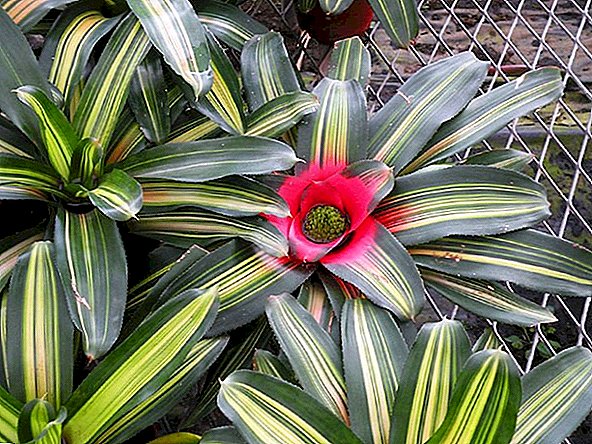
- Marble - Another perennial with tight funnel-shaped rosettes and long (up to 60 cm), pointed at the ends of the leaves. The edges of the leaf plates are jagged, covered with spots. From the outside, the surface of the leaves is more scaly than from the inside. Before flowering spots on the surface of the leaves increase in size and often merge together in separate places. The inflorescence is held by a short peduncle, and white and pink flowers (2-3 cm each) appear only in June.
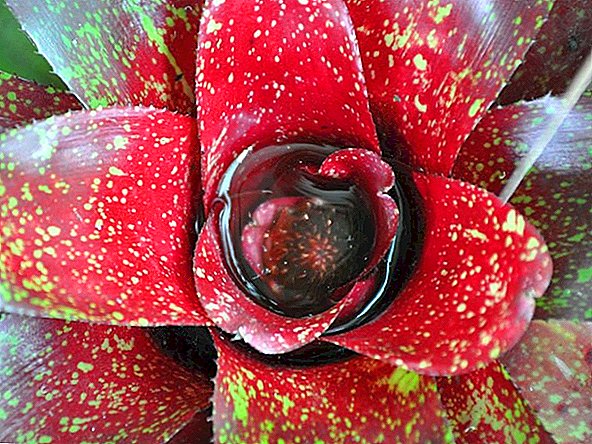
- Beautiful - a sprawling look with large leaf plates of light green color. Their length often reaches 40 cm, and the edges are painted in bright pink or red. The bloom of such neoreglia can be observed twice a year: from January to February and from June to July, when bluish flowers appear on it (the length of each bud is 2-3 cm).
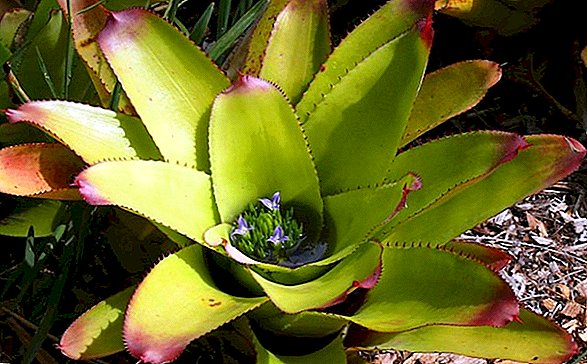
- Gloomy - in contrast to the previous species, the leaf funnels are considerably narrower in this neoreghelium. The leaves grow only up to 40 cm, with a width of 2-3 cm. Small gray spots are clearly visible all over their outer surface, but transverse strips replace them from the inside. Flowering plant begins in August, when the background of red bracts appear blue petals of 1.5 cm each.
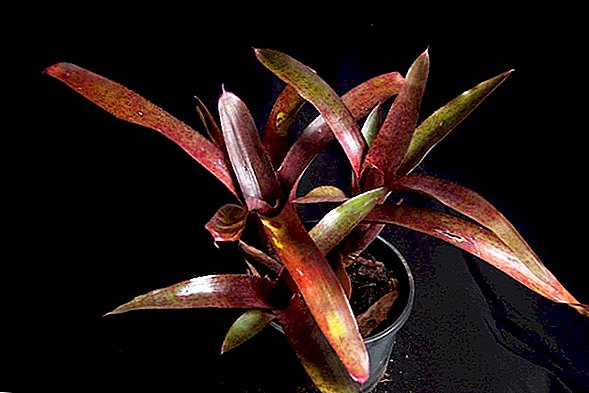
- Bubble - a species that forms small bushes. The length of the leaf plates in this case does not exceed 20 cm, with a width of 1.5 cm. On the outer side there are transverse stripes of red on the leaf surface. The inflorescence is well deepened into the outlet and is represented by a combination of several blue flowers that appear from April to August.
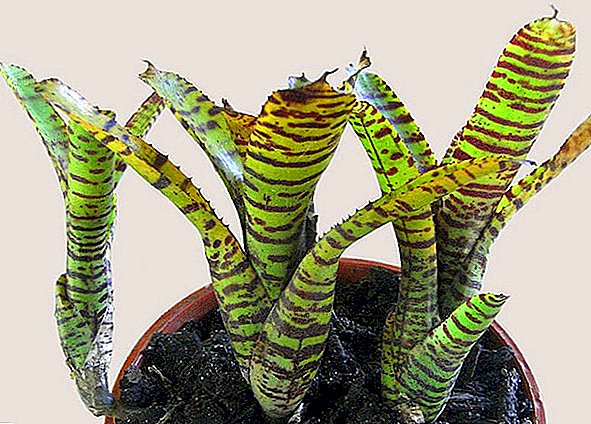
- Tiger This perennial epiphyte is characterized by very high decorativeness, which is explained by the unusual shape and color of the leaf plates. Unlike plants with traditional green leaves, this species has leafy plates yellow-green with burgundy transverse stripes. In length, the leaves do not exceed 10-13 cm, and grow to a width of 1-1.5 cm in width. The inflorescence is dense, it is retained on a short peduncle. It consists of many pale purple flowers, which occur in the beginning of spring.
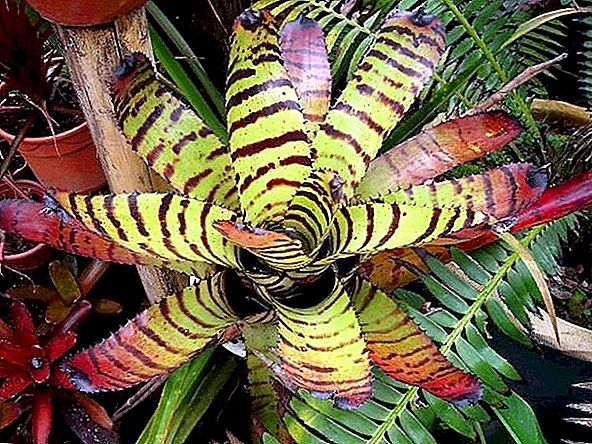
Conditions for growing at home
Choosing tropical plants for indoor growing, you should pay attention to the level of lighting, temperature indicators and humidity in the house. Consider the requirements of Neoreghelia in this regard.
Important! Regardless of the type of neoreghelium chosen, all plants need a high level of humidity, which can be explained by their belonging to the Bromeliad family (plants in this family grow in tropical countries in the wild, with consistently high humidity in the natural environment).
Location and lighting
Being a resident of the tropics, Neoregelia prefers bright, but at the same time diffused solar lighting. Direct sunlight on the leaves can cause stains - peculiar burns that disrupt the plant's visual appeal.
In the summer, it is better to place the pot near the southeast or southwest windows, but if at lunchtime the solar activity is too high, then it will not be out of place to lightly curl the flower with curtains or blinds.  In the cold season, when natural lighting is becoming less and less, you can illuminate the neoreglia with special fitolamps. It is necessary to ensure that the light source is no closer than 1 m from the plant.
In the cold season, when natural lighting is becoming less and less, you can illuminate the neoreglia with special fitolamps. It is necessary to ensure that the light source is no closer than 1 m from the plant.
Temperature conditions
The optimal temperature conditions for neoreghelia depend on the season. In warm spring-summer period, thermometer indicators can reach + 20 ... + 25 ° C, but starting from deep autumn until the very spring, the room temperature is kept at + 16 ° C, which ensures a long flowering of the plant for up to six months or even longer .
Important! In the room with this exotic pot you need to organize a permanent ventilation, but at the same time be sure to avoid drafts. In the summer it is useful to take the pot to the balcony, but only if it is protected from the scorching sun and possible precipitation.
Air humidity
Optimum air humidity is one of the key criteria that you should pay attention to when choosing a suitable place for a flower. In open nature, it does not lack moisture, therefore, in an apartment, these figures should be increased to 60% or even more.  The most suitable places for a tropical guest will be greenhouses or greenhouses, and in their absence you will have to regularly spray the leaves with distilled water. In addition, it will be useful to put the pot on a pallet with wet expanded clay and periodically wipe the sheet plates with a damp cloth.
The most suitable places for a tropical guest will be greenhouses or greenhouses, and in their absence you will have to regularly spray the leaves with distilled water. In addition, it will be useful to put the pot on a pallet with wet expanded clay and periodically wipe the sheet plates with a damp cloth.
Important! The bottom of the pot should not be allowed to come into contact with water with neoregelia, and water should accumulate in the stand. This will lead to the rapid decay of the root system and the death of the whole plant.
Features home care
The rules for the care of neoreghelia are based on the characteristics of other tropical plants. Increased attention should be paid to irrigation, fertilizing and transplanting. Also, do not forget about the nuances of the pruning and requirements for plant reproduction.
Watering rules
Watering Neoregelia involves pouring water into the leaf funnels, which is a common feature of all plants of the Bromeliad family. The best time to moisten the pot is earlier morning, when the remnants of moisture can quickly evaporate under the rays of the rising sun. If after 3-4 hours after watering in the outlet of the leaves is still liquid, it is better to drain.  In the dry period, you can not only water the sheet rosette, but also slightly moisten the soil in the pot. In winter, the introduction of fluid is minimized, and if the temperature drops to + 20 ° C or below, watering is completely stopped. Only spraying leaves from a spray bottle is considered valid at this time.
In the dry period, you can not only water the sheet rosette, but also slightly moisten the soil in the pot. In winter, the introduction of fluid is minimized, and if the temperature drops to + 20 ° C or below, watering is completely stopped. Only spraying leaves from a spray bottle is considered valid at this time.
When growing epiphytic varieties (growing on trees), which is more typical of greenhouses or greenhouses, plants are removed from time to time and completely immersed in a container with water, then they are well dried and returned to their original place. The liquid used for watering or bathing should always be soft and warm.
Did you know? Houseplants are capable of experiencing emotions that are human. First, with the help of a lie detector, this was noticed by researcher C. Baxter (USA), who had studied the room dragon flower. He connected the device to its leaves and poured a flower, after which unusual marks appeared on the detector, which were regarded by scientists as a positive reaction to the appearance of moisture.
Top dressing
The optimal frequency of fertilizing the described tropical plants - about 1 time per month, in the period from March to October. In winter, Neoregelia does not need nutrients and, when the temperature drops, it goes into a state of rest. For the role of fertilizers, ready-made nutritional mixtures for bromeliad pot flowers are ideal, although it is desirable to reduce the dosage by 2 times from the values indicated on the package. Dissolving the fertilizer in water, it just needs to be poured into sockets or applied to the leaves from a spray bottle. 
Pruning
Upon completion of flowering, the mother socket quickly dies off, and it can be removed during the next transplant, and the young sockets can be planted in separate containers. Targeted pruning of existing plants can only be carried out for sanitary purposes: to remove dry, rotted or damaged parts.
Transfer
It is necessary to transplant to neoregelia only if necessary - when the pot has become too small for it or right after the outlet has died. For these purposes, a standard soil substrate for bromeliads is suitable - the main thing is that it should have sufficient friability and breathability, allowing the plant to "breathe."
Learn more about how to properly transplant indoor plants.
As part of the homemade soil mixture must be present sphagnum and pine bark, which like all epiphytic plants. The process of transplanting neoreglia is simple, but it requires great care when performing all actions: contact with the root system should be minimal, mostly only when separating new outlets from dead maternal ones.
The sequence of the procedure is as follows:
- Prepare a new pot, fill it with 1/3 of the drainage layer and half fill it with soil mixture.
- Carefully remove the existing plant from the previous container and place it in a new one, taking care not to damage the roots.
- Cover the remaining space around the root system with soil, while controlling the deepening of the neck: even a small amount of substrate that fell on it can lead to the death of the plant due to the rapidly spreading rot.
 Adults after transplantation can immediately be left in the same place where they grew before the procedure, but for young separated outlets it is better to choose a room with a temperature not lower than + 22 ° C and the possibility of heating the surface on which the pot stands. This feature will contribute to faster rooting.
Adults after transplantation can immediately be left in the same place where they grew before the procedure, but for young separated outlets it is better to choose a room with a temperature not lower than + 22 ° C and the possibility of heating the surface on which the pot stands. This feature will contribute to faster rooting.Breeding
When growing neoregelia at home, new plants can be obtained both in a vegetative and seed way. Consider each of the possible options.
Child Outlets
This is the easiest way of reproduction, and not only the flower described, but also any other plant from the Bromeliad family. After flowering, each of them forms a large number of new processes that have their own root system. They can be separated from the mother plant as soon as the first 3-4 leaflets appear from the child outlet.
Read also, how to feed indoor plants.
The process of separation is simple and repeats in many ways the actions performed during transplantation of neoregelia:
- Fill the prepared pot (or pots) with a drainage layer and a sufficient amount of suitable soil mixture (about half).
- Remove the plant and carefully separate the desired number of suitable daughter outlets, placing each of them in its planting capacity.
- Cover the roots with the remaining soil, leaving the root collar above the ground surface.
- Cover each young plant with a cut bottle and place it in a room with a temperature not lower than + 25 ° C.
 Further care for the planted flowers is reduced to daily ventilation (without drafts) and periodic soil moistening. As soon as you notice the resumption of growth, you can remove the shelter and gradually teach young neoregels to standard growth conditions, stretching the adaptation period for several weeks (the change in the level of humidity and temperature conditions should take place gradually).
Further care for the planted flowers is reduced to daily ventilation (without drafts) and periodic soil moistening. As soon as you notice the resumption of growth, you can remove the shelter and gradually teach young neoregels to standard growth conditions, stretching the adaptation period for several weeks (the change in the level of humidity and temperature conditions should take place gradually).Seeds
When seed reproduction takes a little more effort. To begin with, the acquired seed should be soaked in a weak solution of potassium permanganate (for about 2-3 hours), then dried and finally sown in seedling containers filled with moistened sphagnum moss.
You will be interested to know how to grow bakopu from seeds.
It is advisable to deepen the seeds by no more than 0.5 cm, or just lightly sprinkle them on top of the soil. Boxes with seedlings should be covered with glass and moved to a place with a stable temperature of + 25 ... + 27 ° C.
With daily ventilation and sufficient moistening of the substrate (preferably from a sprinkler), the first shoots will appear within 2-3 weeks, and after another 2 months you can think of transplanting grown plants to a permanent place of growth. With this method of reproduction, the first flowering of neoreghelia can be observed only in the 4th year after sowing. 
Diseases and pests
Diseases and pests threaten neoreghelia only in case of violation of the requirements for care and growing conditions. Of the pests she is most often plagued. mealybugs, aphids, spider mites and scale insects, and the latter are represented by a specific species - bromeliad shield (dwells on the leaves and leads to their rapid extinction).
Read also how to deal with mealybug.
No popular methods of pest control will not help here, therefore, at the first signs of a problem, it is better to immediately turn to insecticidal preparations, for example, Aktellica, Fufanon or Karbofos, using them in the dosage specified by the manufacturer.
Of the diseases, the most dangerous is considered Fusarium, the main cause of which is the overmoistening of the soil. With the timely normalization of the humidity level, it is possible to save the plant, but with a strong defeat by rotting from neoreghelium it is necessary to get rid of.  Other problems with growing a flower include the appearance of light or brown spots on the leaves, due to direct sunlight, as well as drying of the tips of the sheet plates due to the reduced humidity of the air in the room.
Other problems with growing a flower include the appearance of light or brown spots on the leaves, due to direct sunlight, as well as drying of the tips of the sheet plates due to the reduced humidity of the air in the room.
When caring for neoreghelia, always carefully examine it, because this is the only way you will be able to notice the problem in a timely manner, protecting yourself from serious trouble and loss of a flower. Otherwise, this tropical plant is an ideal solution for those who want to somehow diversify their home flower garden.








